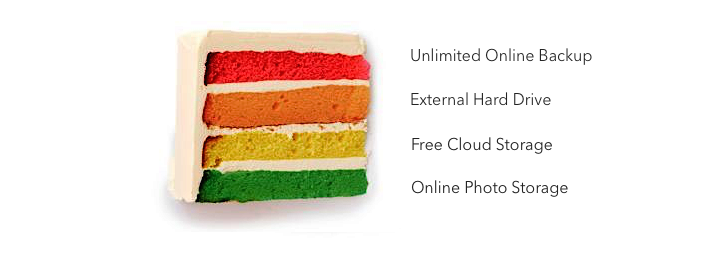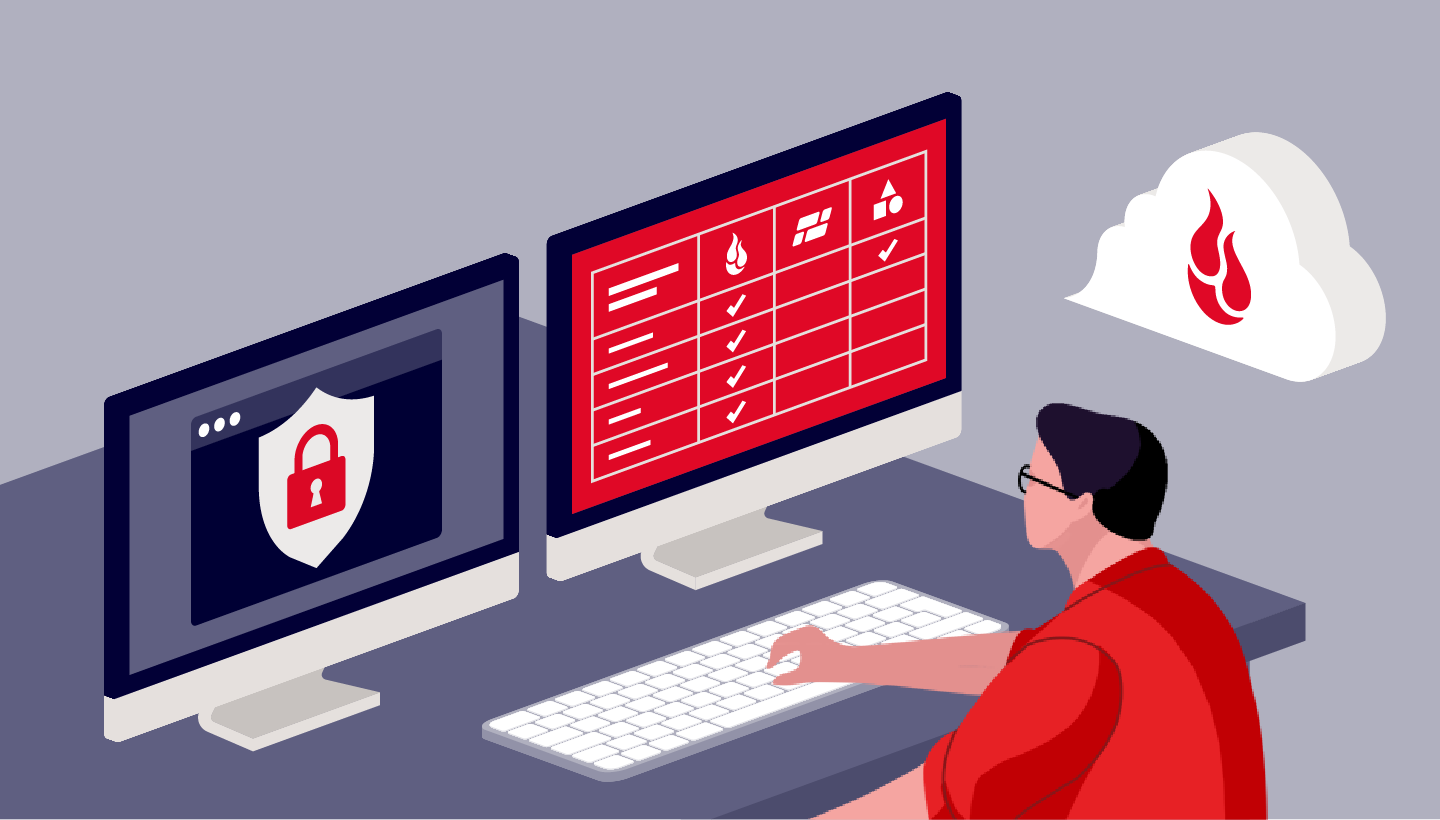
Where do you store your files? This has become a modern dilemma, thanks to the proliferation of online storage services like Dropbox and Google Drive and online backup services like Backblaze. Using multiple services offers additional protection for your precious data, but you don’t want your files scattered everywhere either. Here’s my layered approach for keeping my files synced and backed up.
As someone who used to manage the backups at a small company, I can tell you that the most important word when it comes to backups is redundancy. So if it seems like I go a little overkill with my backup and file storage plan, it’s because I know that hard drives can fail at any time, files get accidentally overwritten, and houses (with computers in them) get flooded or burned down. Having a system in place gives me peace of mind that if and when things go wrong, I’ll be able to recover quickly. The more layers to the system, the better.
Layer 1: Unlimited Online Backup
With unlimited online backup services as low as $5 a month (or even less, if you sign up for a yearly or multi-year plan), using one of these services is a no-brainer. If you’re only going to do one thing to protect your data, this is what I’d recommend as the minimum, for a few reasons. The first is the ease of use. Manually backing up your files is a chore, but with an online backup service, it’s done quietly, regularly, and automatically for you. It’s literally set and forget. The second reason is you don’t have to think about what to backup or worry about how much room you have to store your files, unlike using cloud storage services like Dropbox, which give you a limited amount of space. In addition to the files on your computer, external drives get backed up too. Also, your files are encrypted first so no one else can read them—a critical backup feature when you’ve got files with sensitive information, like your tax returns or that embarrassing photo of you after you got the world’s worst haircut.
The biggest reason why I think this should be your first layer, though: Unlike local backups (say, to an external hard drive), your data is saved off-site and protected from things like computer theft or natural disasters. Back when I was doing backups as my job, unlimited backup services didn’t exist. To get the security of off-site backups, we had to alternate backup drives and take ones we swapped out to another location, which was a pain. But now you can get that protection without moving from your living room.
What to store here:
All of your important data (automatically).
Layer 2: An External Drive
Whether you’re backing up Windows or a Mac, it’s important to have an additional copy of your important files saved elsewhere besides just your computer. Both operating systems have built-in tools to automatically save multiple versions of your documents and other files, as well as create a system image (snapshot of your computer) in case of emergency.
You can also use a network drive for this, such as a NAS, but I like external drives because they’re inexpensive and you can quickly grab it if you need to (e.g. the fire alarm goes off or you’re heading to your vacation home for a few months). Because my laptop’s SSD drive is miserably small, I also store my largest files here—irreplaceable photos and videos. Again, these are also automatically backed up with the online backup service.
What to store here:
System image backup, file version backups (e.g. Mac’s Time Machine or Windows’ File History), large files that can’t fit on your computer hard drive. If you store important files on here that have sensitive information, make sure you encrypt them first, with a tool like 7-Zip, in case the drive gets lost or stolen.
Layer 3: Dropbox, OneDrive, and/or Google Drive
Online storage and file syncing services aren’t the same as backup, but they come in handy when sharing files with others or if you need to access the files from another computer or mobile device.
Each service has its merits and disadvantages. You could choose just one to use, which would make organizing your files simple (just store the files you want synced in the dedicated folder) or use a combination of these services. If you do use multiple cloud storage services, it helps to have clear rules for what you’re going to store on each, so it’s easier to find your files. For example, I use:
- Dropbox for work in progress files. I find that Dropbox is fastest at syncing files over my local network and it integrates well with other apps.
- OneDrive for Microsoft Office files, because of the unlimited space for Office documents.
- Google Drive for backups of photos (see below) and shared Google Docs. It seems most people have a Google account, so it’s easier to share a spreadsheet or document with them from Google Drive.
What to store here:
Files you need to access instantly from anywhere or share and collaborate on with others. Don’t store files with sensitive information here unless you encrypt them first.
Layer 4: Flickr and/or Google Photos
Finally, there’s an additional layer I use for photos and videos, because these are my most valuable files and also the kind I regularly share. Although they’re backed up with the online backup service, I also use Flickr’s and Google Photos’ automatic upload tools to save copies of my photos from my external hard drive to their online storage. Flickr gives you 1TB of free space and Google Photos offers unlimited storage if you keep the photos at standard resolution. Also, these services automatically back up photos from smartphones, which is a great benefit.
So that’s my system so far. You can compare the various online backup and cloud backup services here. What do you use?




